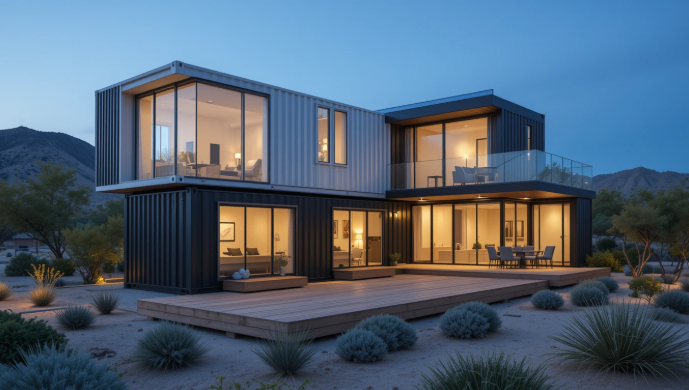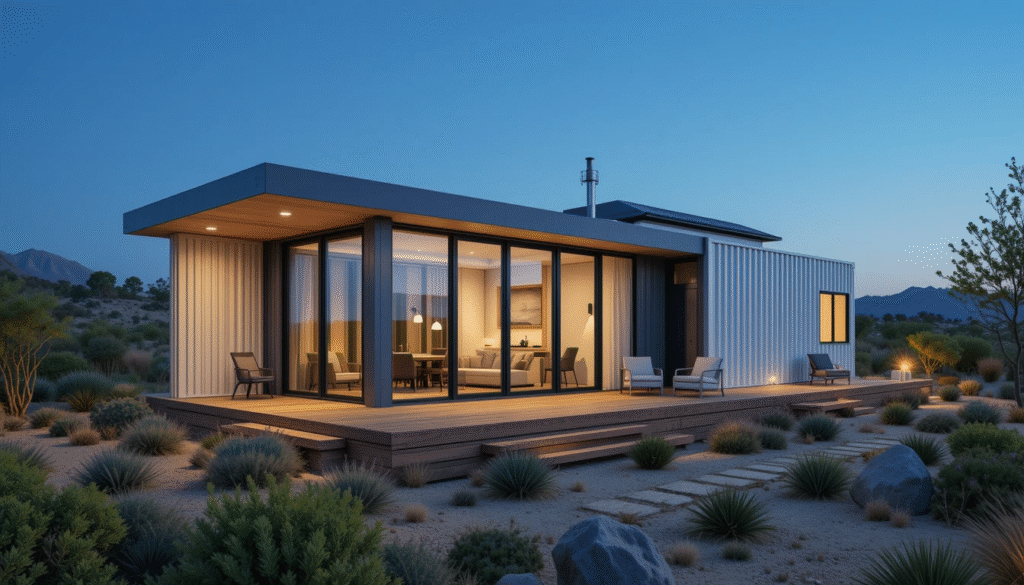Phone:
(701)814-6992
Physical address:
6296 Donnelly Plaza
Ratkeville, Bahamas.

As the American housing market continues to evolve, more people are searching for alternatives that are affordable, eco-friendly, and efficient. Enter the world of ISO Container Houses-a modern solution rooted in international shipping standards but reimagined for comfortable, sustainable living.
You’ve likely seen shipping containers stacked on trains, trucks, or ships. But what if we told you those same containers could be turned into beautiful, durable homes that meet strict international standards?
Let’s explore how ISO-standard containers are being transformed into a new kind of American dream-one that’s cost-effective, resilient, and full of potential.
🍓 Click Here to Buy Tiny homes 🥃✨
🛒🍓 Grab Your Tiny homes Now! 🥂💎
🍹🍓 Enjoy the Sweetness – Buy Tiny homes Today! 🛍🔥
ISO Container Houses are residential structures made from ISO-standard shipping containers. ISO stands for the International Organization for Standardization, which sets the global specifications for shipping containers used in cargo transport.
These containers are built to withstand extreme conditions, are structurally sound, and follow standardized dimensions-making them ideal for modular construction. The most common types used in housing are:
Because they follow international standards, these containers are consistent, strong, and easy to work with-great for creating a customized, stackable, and scalable home.
Across the U.S., from Texas ranches to California deserts and even urban backyards, ISO container homes are becoming a smart solution to the housing crunch. Here’s why:
ISO containers are made of corten steel, designed to withstand years of transport, saltwater corrosion, and stacking pressure. This makes them far more durable than wood-frame homes, particularly in areas prone to hurricanes, fires, or seismic activity.
The average American home costs over $400,000 in many markets. An ISO container home? You can start with a single-container tiny home for around $30,000–$60,000 and scale up from there. It’s one of the most cost-effective paths to homeownership.
ISO containers are essentially pre-built structures. Once delivered, a skilled crew can modify and install them in a matter of weeks, not months. For prefab or modular designs, entire container homes can be assembled in 8–12 weeks.
Reusing old containers keeps them out of landfills and reduces the need for new building materials. Plus, many ISO container homes incorporate solar panels, composting toilets, rainwater collection, and energy-efficient insulation, making them a favorite among eco-conscious buyers.
With ISO containers, you’re working with a standard “building block.” That means you can stack them, cut them, or combine them to create custom layouts. Whether you want a single-level studio or a multi-container, two-story home, the possibilities are endless.
While ISO container houses offer a lot of advantages, it’s important to go into the process with your eyes open. Here are a few key things to know:
Not every city or county in the U.S. allows container homes. Some treat them as temporary structures, while others require specific foundations or materials. Always check with your local zoning office before you buy land or start building.
Metal containers conduct heat and cold, so proper insulation is essential-especially in climates with extreme temperatures. Spray foam insulation is a popular choice because it also helps prevent moisture and rust.
Cutting into ISO containers for doors, windows, or room expansions must be done carefully. Each cut can compromise the strength of the steel walls, so it’s important to reinforce structural areas properly and use experienced builders.
Even though ISO containers are mobile, a proper foundation (like concrete piers or slabs) is required to ensure stability and longevity. Sloping or rocky land may increase costs for site prep and delivery.

Here’s a general breakdown of what you can expect to pay when building an ISO container house in the U.S.:
| Item | Estimated Cost |
|---|---|
| Used 20ft ISO Container | $2,000–$4,000 |
| Used 40ft ISO Container | $3,000–$6,000 |
| Insulation & Interior Finish | $20,000–$50,000 |
| Plumbing & Electrical | $5,000–$15,000 |
| HVAC and Climate Control | $4,000–$10,000 |
| Foundation & Site Work | $3,000–$10,000 |
| Permits, Architect, Fees | $2,000–$7,000 |
| Total Basic Build | $40,000–$100,000+ |
The final cost depends on the number of containers, design features, land value, and finishes.
From compact one-bedroom units to fully off-grid family homes, ISO container houses can be tailored to almost any lifestyle.
An ISO container meets specific international standards set by the International Organization for Standardization. These standards ensure consistency in size, strength, material, and structural integrity. Using ISO containers for homes means you’re working with highly reliable, modular units.
Yes, but it depends on local regulations. In some areas, container homes are embraced, especially for rural land or accessory dwelling units (ADUs). In others, they may face restrictions due to zoning, appearance codes, or building material requirements. Always get pre-approval from local authorities.
When properly maintained, an ISO container house can last 30 to 50 years or more. Routine maintenance-like sealing against rust, painting, and proper insulation-helps extend its lifespan. Corten steel is known for its weather resistance and longevity.
Yes, though options may be more limited than for traditional homes. Some credit unions, banks, and alternative lenders offer financing for container builds, especially if they’re on a permanent foundation. Insurance companies may also offer coverage, particularly if the home meets local code and is classified as a permanent residence.
If you’re looking for a way to break free from the traditional housing model, an ISO container house might be your perfect match. It’s strong, modular, affordable, and ready to be customized to your lifestyle.
Whether you’re planning to build a full-time residence, a weekend getaway, or a profitable rental, ISO container houses prove that a steel box can be so much more than meets the eye.